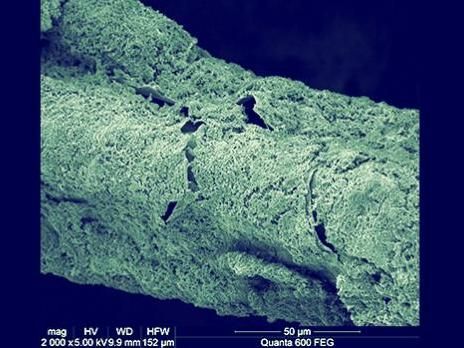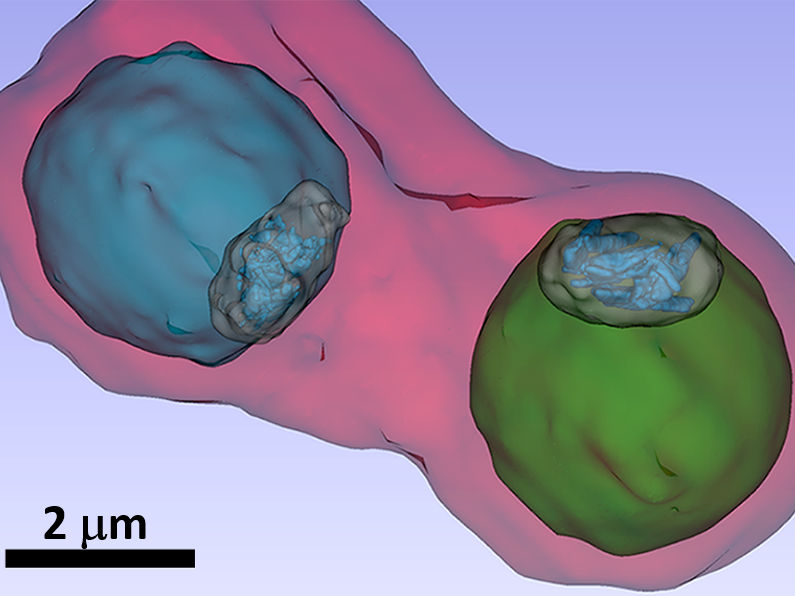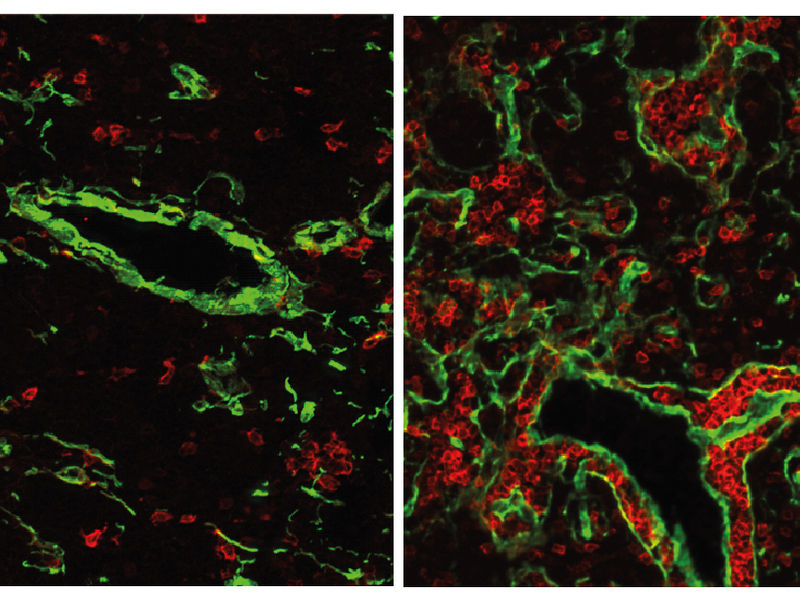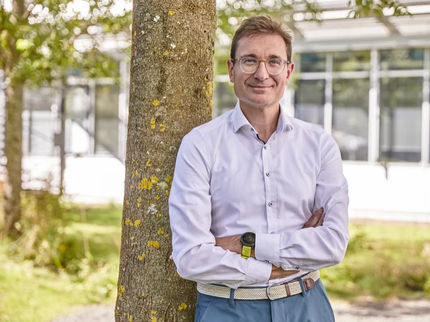Lighting the path to recycling carbon dioxide
Combining solar-harvesting materials with carbon-dioxide–consuming microbes could be an efficient way to generate clean fuels
Semiconductive photocatalysts that efficiently absorb solar energy could help reduce the energy required to drive a bioelectrochemical process that converts CO2 emissions into valuable chemicals, KAUST researchers have shown.

SEM image shows the dense and uniform cathodic biofilm, which mainly comprises chemolithoautotrophs, and could serve as biocatalysts for efficient carbon dioxide conversion to acetate.
© 2020 KAUST
Recycling CO2 could simultaneously reduce carbon emissions into the atmosphere while generating useful chemicals and fuels, explains Bin Bian, a Ph.D. student in Pascal Saikaly's lab, who led the research. "Microbial electrosynthesis (MES), coupled with a renewable energy supply, could be one such technology," Bian says.
MES exploits the capacity of some microbes to take up CO2 and convert it into chemicals, such as acetate. In nature, chemolithoautotroph microbes metabolize minerals as a source of energy in a process that involves the shuttling of electrons. This capability can be exploited to turn CO2 into value-added products if the microbes are supplied with a stream of electrons and protons from anodic water splitting in an electrochemical cell.
In their latest work, rather than focus on the CO2-to-acetate step, the team worked on reducing the energy input for molecular oxygen (O2) production at the anode, a reaction that keeps the overall cell in balance. "In MES systems, the process that consumes the most energy is believed to be the oxygen evolution reaction (OER)," Bian explains. Researchers have used light-capturing anode materials, such as titanium dioxide, that harness energy from sunlight to help drive the OER. In their current work, the team investigated a promising alternative for the photoanode, the light-harvesting material, bismuth vanadate.
Bismuth vanadate absorbed energy from a much broader range of the solar spectrum than titanium dioxide, making the whole MES cell more efficient, the team showed. "We obtained solar-to-acetate conversion efficiency of 1.65 percent, which is the highest reported so far," Saikaly says. "This efficiency is around eight times higher than the 0.2 percent efficiency of global natural photosynthesis, which is nature's solar-powered process for converting CO2 into energy-rich molecules," Bian notes.
So far the team has kept the microbe biocatalysts supplied with a steady stream of electrons and CO2 to sustain their growth. "The next step for us is to test our system under real sunlight and monitor the resilience of the biocatalysts under an intermittent renewable energy source," Saikaly says.
Original publication
Other news from the department science

Get the life science industry in your inbox
By submitting this form you agree that LUMITOS AG will send you the newsletter(s) selected above by email. Your data will not be passed on to third parties. Your data will be stored and processed in accordance with our data protection regulations. LUMITOS may contact you by email for the purpose of advertising or market and opinion surveys. You can revoke your consent at any time without giving reasons to LUMITOS AG, Ernst-Augustin-Str. 2, 12489 Berlin, Germany or by e-mail at revoke@lumitos.com with effect for the future. In addition, each email contains a link to unsubscribe from the corresponding newsletter.
Most read news
More news from our other portals
Last viewed contents
The_International_Network_of_Cholesterol_Skeptics
Australian_Breastfeeding_Association
Aromatic-ring-hydroxylating_dioxygenases

Malaria pathogens under the X-ray microscope - X-ray microscopy at BESSY II reveals how antimalaria-drugs might work
Religion_and_drugs
Escherichia_coli_O104:H21
Congenital_heart_defect
Category:Hormones_by_chemical_structure
Hodgkin's_lymphoma

500 million year reset for the immune system

Spoiled oranges shine light on malignant cells - Biomedical device passes the litmus test






















































